井冈山上太阳红

蒲文强
2021年8月15日
君请看,井冈山上太阳红。
望长天,光芒万丈照神州。
君可知,湘赣边界苏维埃[1]?
曾记否,井冈精神[2]谁人创?
伟大的共产党,
英明的毛委员。
历史二年四个月[3]。
特委决策毛书记,
高举帅旗战井冈。
秋收队伍[4]转战急,
红旗漫卷遍罗霄[5]。
喚起农工千百万,
改地換天开新艳。
天翻地覆工农兵,
朱毛会师[6]井冈山。
龙江书院[7]在述说,
党管武装[8]立铁律。
四军五军[9]党指挥,
朱彭[10]军长党性强。
黄洋界上显神威[11],
五大哨口[12]捷报传。
百万农工湧潮头。
伟人挥笔西江月[13],
光耀千秋若昆仑。
开天辟地新世界,
执掌大印人民欢。
分田分地打土豪,
人民当家掌政权。
民主政权湘赣边,
袁文才把主席当[14]。
金蟾望月[15]山峰在,
王佐行洲大本营[16]。
下山吊羊[17]济百姓,
誉滿井岗人人敬。
五井圣地[18]正青春,
茨萍大井[19]万世馨。
井冈人民功高天,
生命鲜血助红军。
军民魚水情意重,
甘泉乳汁慰军忙。
千呼万唤颂英雄,
吃水不忘挖井人。
朱毛红军诞生地,
一个阵容共和国[20]。
五十六人为将帅[21],
将星如云耀中华。
井冈山精神万岁,
红军英雄们永恒。
抗战胜利纪念日,
人民怀念老革命。
功臣已矣[22]精神在,
千秋万代永铭怀。
百年诞辰党庆时,
更加怀念毛泽东。
注释:
[1] 土地革命战争时期,中国共产党在湘赣边地区建立的地方革命政权机关。1927年10月,毛泽东率湘赣边秋收起义部队进入罗霄山脉中段后,茶陵、遂川、宁冈等县相继成立工农兵政府。1928年5月,毛泽东在宁冈茅坪主持召开中共湘赣边界各县工农兵第一次代表大会。
[2] 井冈山精神是以毛泽东为首的党的特别委员会创立的红色革命精神之一,诞生于土地革命时期的井冈山根据地。井冈山精神的内涵可以用五句话来概括:1. 坚定不移的革命信念。2. 坚持党的绝对领导。3. 密切联系人民群众的思想作风。4. 一切从实际出发的思想路线。5. 艰苦奋斗的作风。
[3]井冈山斗争,1927年10月至1930年2月,历时二年四个月。
[4] 秋收起义,1927年9月9日,湘赣边界秋收起义按预定计划爆发。9月19日,秋收起义部队在文家市会师 ,毛泽东主持前委会议,及时作出从进攻大城市转向农村进军的决定,初步形成了农村包围城市的战略思想。秋收起义是继南昌起义之后,中国共产党领导的又一次著名的武装起义,是中共党史军史上的三大起义之一。中国人民革命史开始了具有决定意义的新起点。
[5]井冈山的革命斗争,发生在罗霄山脉中段地区。1927年10月起,毛泽东、朱德、陈毅、彭德怀、滕代远等老一辈无产阶级革命家先后率领中国工农红军来到井冈山,创建以宁冈县为中心中国第一个农村革命根据地,开辟了“以农村包围城市、武装夺取政权”的具有中国特色的革命道路,从此鲜为人知的井冈山被载入中国革命历史的光荣史册,被誉为“中国革命的摇篮”和“中华人民共和国的奠基石”。
[6] 4月下旬,朱德、陈毅率领的部队抵达江西省宁冈县的砻市,与毛泽东统率的井冈山部队胜利会师。两军会师后,合编为工农革命军第四军,朱德任军长,毛泽东任党代表,王尔琢任参谋长,辖三个师,朱德、毛泽东、陈毅分任第十、第十一、第十二师师长。不久取消师的建制,编为六个团(5月下旬第三十、第三十三团返回湘南开展游击战争)。全军1万余人,枪2000余支。
[7] 龙江书院是毛泽东、朱德会师的具体地点,见证了这一伟大历史时刻。
[8]党对于军队的绝对领导,是以毛泽东同志为首的前委和特委党的领导确定的。
[9]井冈山斗争时,主要红军队伍有红四军、红五军和地方红军武装。备
[10] 红四军,军长:朱德,党代表:毛泽东,参谋长:王尔琢,教导大队大队长兼士兵委员会主任:陈毅
第十师师长:朱德(兼)
党代表:宛希先
第二十八团团长:王尔琢
党代表:何长工
第一营营长:林彪
党代表:熊寿祺
第二营营长:袁崇全(后叛变)
党代表:杜松柏(后叛变)
第三营营长:肖劲
党代表:吴弼
第二十九团团长:胡少海
党代表:龚楚
第一营营长:朱舍我
党代表:xxx
第二营营长:李光化
党代表:胡世俭
第三营营长:肖荣标
党代表:彭晒
第三十团团长:刘之至
党代表:xxx
第十一师师长:张子清(因负伤由毛泽东兼代)
党代表:何挺颖
第三十一团团长:张子清(兼)
党代表:何挺颖(兼)
第一营营长:员一民(后陈毅安)
党代表:毛泽潭
第三营营长:伍中豪
党代表:杨岳彬(后叛变)
第三十二团团长:袁文才
党代表:陈东日
第一营营长:袁文才(兼)
党代表:陈东日(兼)
第二营营长:王佐
党代表:康健
第三十三团团长:邓允庭
党代表:邝朱权
第十二师师长:陈毅
党代表:邓宗海
第三十四团团长:邓宗海(兼)
党代表:刘泰
第三十五团团长:黄克诚
党代表:李一鼎
第三十六团团长:李奇中
党代表:黄义藻
军直属单位:
特务营营长:宋乔生
党代表:敬懋修
红军医院院长:曹 嵘
党代表:肖光球
第五军,军长彭德怀,政治委员滕代远,副军长黄公略,参谋长邓萍,政治部主任吴溉之。下辖5个纵队。第一纵队,纵队长李灿(后孔荷宠代);第二纵队,纵队长黄公略(兼任)、政治委员张启龙;第三纵队,纵队长吴溉之(兼任)、政治委员于定一;第四纵队,纵队长郭炳生(1932年9月叛变投敌)、政治委员张纯清;第五纵队,纵队长李灿(后游雪程代)、政治委员何长工。
[11]1928年8月30日,在井冈山黄洋界哨口保卫战中,红军以一个营的兵力,打垮了进攻井冈山革命根据地敌人四个团兵力。史称黄洋界大捷。
[12] 井冈山五大哨口,位于茨坪四周,它们是五条通往井冈山的要道,山峰陡峭,峡谷幽深,地势十分险要。它们分别是北面的黄洋界哨口,南面的八面山哨口,西南面的双马石哨口,南面的朱砂冲哨口,东面的桐木岭哨口。在这些哨口的万丈深渊中可以看到苍鹰在半山中盘旋,景象十分壮丽。
[13] 1928年9月5日,毛泽东同志为井冈山黄洋保卫战大捷,欣然命笔挥毫,写下了著名的《西江月·井冈山》
山下旌旗在望,山头鼓角相闻。
敌军围困万千重,我自岿然不动。
早已森严壁垒,更加众志成城。
黄洋界上炮声隆,报道敌军霄遁。
[14] 1928年5月,毛泽东在宁冈茅坪主持召开中共湘赣边界各县工农兵第一次代表大会。大会选举产生湘赣边界工农兵大会执行委员会,成立湘赣边界工农兵苏维埃政府,袁文才任政府主席,政府下设军事、财政、土地、司法、青年、妇女、工农等部,下辖茶陵、遂川、宁冈、永新等六个县政府。湘赣边界工农兵苏维埃政府成立后,将土地革命列入重要议事日程。
[15] 井冈山杜鹃山景区(即改名前的笔架山)里,在一片杜鹃密林处,有几块巨石,前后斜立,形态酷似黑框金蟾,日夜抬头望天,人们称其为“金蟾望月”石,是笔架山美景之一。
[16] 王佐同志是井冈山早期革命领导人之一。王佐同志1928年加入中国共产党,曾被选为中共湘赣边界特委委员,遂川县工农兵代表大会执委会常委。在粉碎湘赣军阀“会剿” 和保卫井冈山革命根据地的龙源口、黄洋界等战斗中, 率部英勇杀敌,出奇制胜。1929年1月红四军主力进军赣南闽西后,他率三十二团协同红五军守卫井冈山。在“金蟾望月”石的西边50米处,有几块较大而平整的石头,据说,当年井冈山的好汉王佐在当绿林时就是以笔架山下的行洲、下庄为大本营,笔架山是他们常来之地。就在这几块大石上,王佐和他的部队曾经坐在上面开会商讨战事,并研究如何下山“吊羊”。
[17“吊羊”,在当时就是绑架土豪作为人质,索以巨款,拿到钱物后除自己部队开支外,还会分钱给贫苦的百姓解决生活问题。
[18] 井冈山有五井,指五个位于群山环绕、宛若井状的山间盆地村庄,即大井、小井、中井、上井和下井。
[19] 井冈山大井是其中最大的村庄,是当年毛泽东、朱德、陈毅、彭德怀等和红军开展革命活动的重要场地之一。
[20]从井冈山走出来的红军高级指挥员,在中华人民共和国成立时,分别担任国家主席、副主席、中国人民解放军总司令、中央人民政府委员、党、政军重领导职务若干人。
[21] 1955年授军銜期间,毛泽东主席坚持不接受授予他大元帅军銜。
参加井冈山斗争的红軍高级将领,由于建国后从部队转业到各级党政领导岗位上没有授衔的将领:谭震林、滕代远、何长工等。
参加过井冈山斗争的开国将帅名单如下:
元帅(5名):朱德、彭德怀、林彪、陈毅、罗荣恒。
大将(3名):粟裕、黄克诚、谭政。
上将(15名):肖克、张宗逊、邓华、彭绍辉、宋任穷、赖传珠、杨至成、陈士榘、陈伯钧、朱良才、杨得志、黄永胜、贺炳炎、赵尔陆、李聚奎。
中将(21名):王紫峰、王辉球、毕占云、肖新槐、杨梅生、李寿轩、张令彬、张国华、欧阳毅、周玉成、赵鎔、姚硃,晏福生、唐天际、曹里怀、韩伟、赖毅、谭甫仁、谭希林、谭冠三、谭家述。
少将(12名):王云霖、王耀南、龙开富、刘显宜、吴树隆、杨绍良、张平凯、张树才、郑效峰、黄连秋、曾敬凡、赖春风。
[22]为建立中国共产党、中国人民解放军、中华人民共和国的老一辈无产阶级革命家、政治家、军事家,当年在井冈山的红军将领已大多离世,但是他们创立的井冈山精神永放光芒!
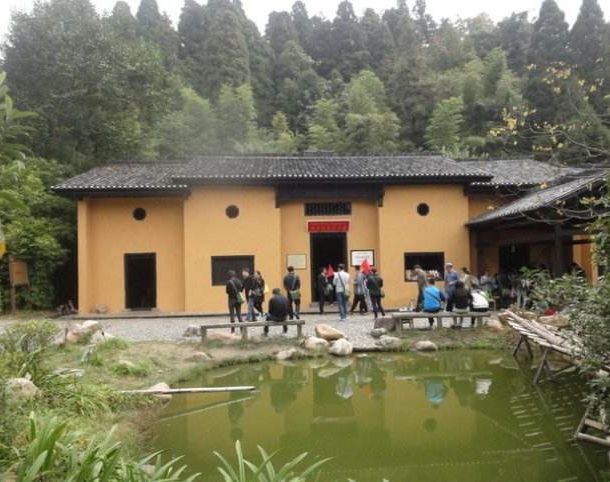
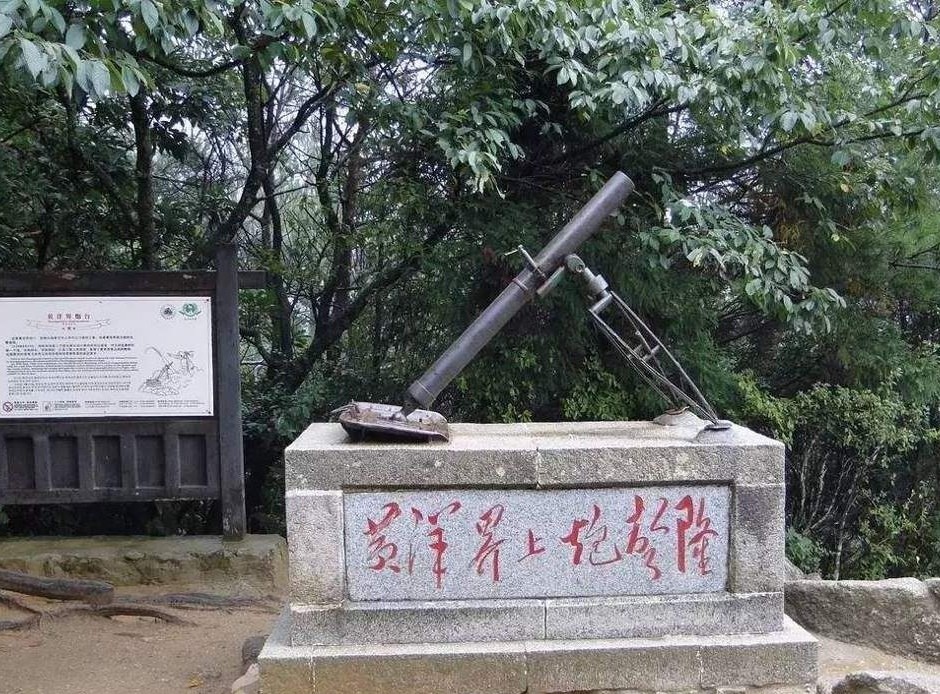
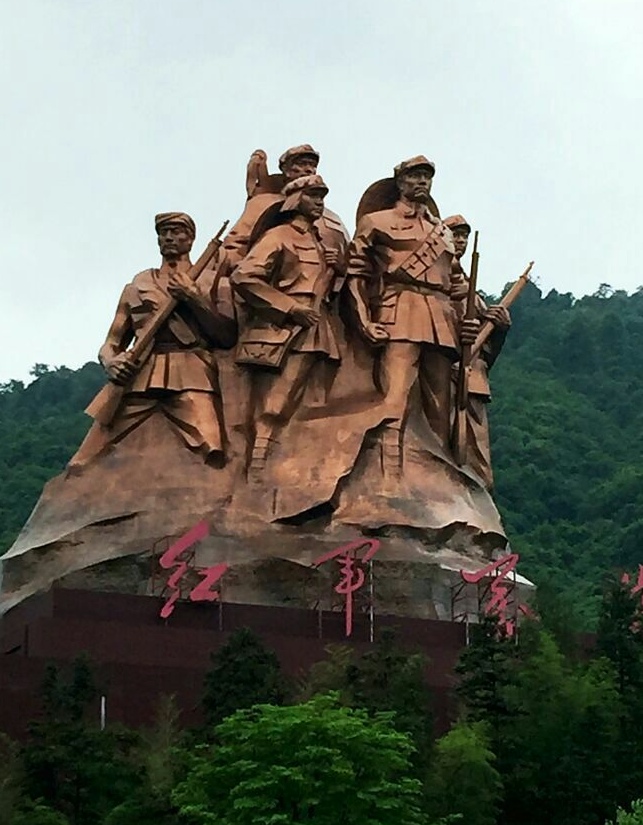
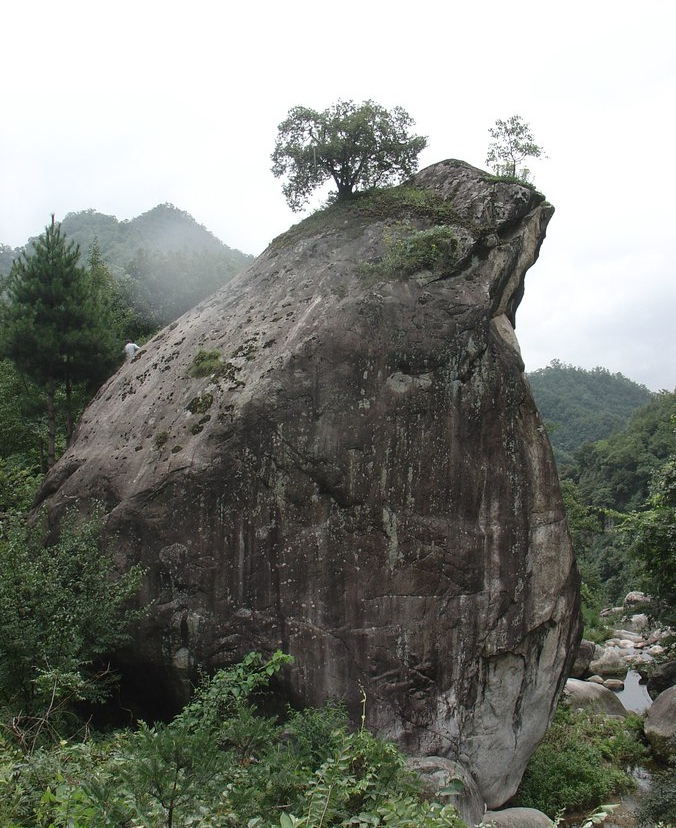


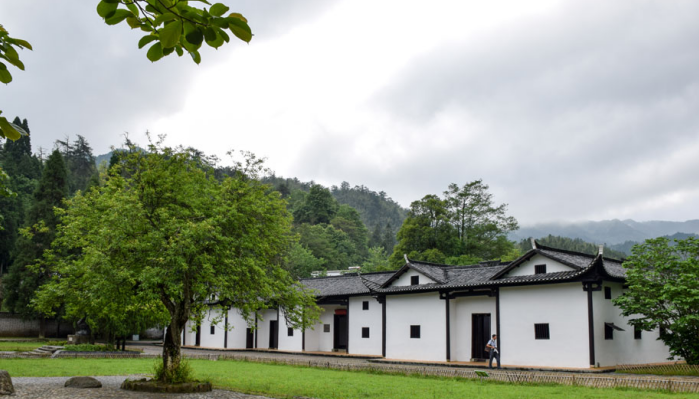
Sun red on Jinggangshan
Pu Wenqiang
August 15, 2021
Look, the sun is red on Jinggang Mountain.
Looking at the long sky, the light shines on China.
You know, the Soviet [1] on the Hunan Jiangxi border?
Do you remember who created Jinggang Spirit [2]?
The great Communist Party,
Wise member Mao.
The history is two years and four months [3].
Secretary Mao of the special committee,
Hold high the handsome flag and fight Jinggang.
The autumn harvest team [4] is in a hurry,
Red flags roll all over the sky [5].
Arouse millions of farmers and workers,
Change the land, change the sky and open a new color.
Earth shaking workers, peasants and soldiers,
Zhu Mao meets [6] Jinggangshan.
Longjiang academy [7] is telling,
The party governs the armed forces [8] according to the iron law.
The fourth and fifth armies [9] command the party,
Commander Zhu Peng [10] has a strong party spirit.
Huang Yang shows great power in the world [11],
Five outposts [12] good news.
Millions of farm workers are surging.
A great man writes Xijiang moon [13],
Shine like Kunlun for thousands of years.
A new world,
In charge of the people's Republic of India.
Divide the fields and land to fight the local tyrants,
The people are in power.
The democratic regime is on the Hunan Jiangxi border,
Yuan Wencai made the chairman [14].
The Golden Toad looks at the moon [15] at the peak,
Wang zuohangzhou base camp [16].
Hanging sheep down the mountain [17] to help the people,
The reputation is full of Jinggang and everyone respects it.
Wujing holy land [18] is in its youth,
Ciping Dajing [19] wanshixin.
The people of Jinggang have made great contributions,
Life and blood help the Red Army.
The army and the people have a strong sense of fish and water,
Sweet spring milk comforts the army.
Call for heroes,
The draught never forgets the well digger.
The birthplace of the Zhu Mao Red Army,
A Republic [20].
Fifty six are generals [21],
The stars shine like clouds in China.
Long live the Jinggangshan spirit,
Red Army heroes forever.
The anniversary of the victory of the war of resistance against Japan,
The people miss the old revolution.
Meritorious officials have passed away [22] the spirit is,
Forever.
On the party's centenary,
Miss Mao Zedong even more.
notes:
[1] During the Agrarian Revolutionary War, the Communist Party of China established a local revolutionary regime in the border areas of Hunan and Jiangxi. In October 1927, after Mao Zedong led the Autumn Harvest Uprising troops along the Hunan Jiangxi border into the middle of the Luoxiao mountains, workers, peasants and soldiers governments were successively established in Chaling, Suichuan, Ninggang and other counties. In May 1928, Mao Zedong presided over the first Congress of workers, peasants and soldiers of all counties on the Hunan Jiangxi border of the Communist Party of China in Maoping, Ninggang.
[2] Jinggangshan spirit is one of the red revolutionary spirits founded by the party's special committee headed by Mao Zedong. It was born in Jinggangshan base during the agrarian revolution. The connotation of Jinggangshan spirit can be summarized in five sentences: 1. Unswerving revolutionary faith. 2. Adhere to the party's absolute leadership. 3. Keep close contact with the ideological style of the people. 4. The ideological line of proceeding from reality. 5. The style of hard work.
[3] The Jinggangshan struggle lasted two years and four months from October 1927 to February 1930.
[4] The Autumn Harvest Uprising broke out as scheduled on September 9, 1927. On September 19, the Autumn Harvest Uprising troops met in Wenjia City. Mao Zedong presided over the front committee meeting and made a timely decision to shift from attacking big cities to marching into rural areas, initially forming the strategic idea of Encircling Cities from rural areas. The Autumn Harvest Uprising is another famous armed uprising led by the Communist Party of China after the Nanchang Uprising. It is one of the three uprisings in the history of the party and the army of the Communist Party of China. The history of the Chinese people's revolution has begun a new starting point of decisive significance.
[5] The revolutionary struggle in Jinggangshan took place in the middle of the Luoxiao mountains. Since October 1927, Mao Zedong, Zhu De, Chen Yi, Peng Dehuai, Teng Daiyuan and other proletarian revolutionaries of the older generation have successively led the Chinese workers' and peasants' Red Army to Jinggangshan, created China's first rural revolutionary base centered on Ninggang County, and opened up a revolutionary road with Chinese characteristics of "encircling cities with rural areas and seizing power with military equipment", Since then, the little-known Jinggangshan mountain has been recorded in the glorious annals of Chinese revolutionary history, known as "the cradle of Chinese revolution" and "the cornerstone of the people's Republic of China".
[6] In late April, the troops led by Zhu De and Chen Yi arrived in Longshi, Ninggang County, Jiangxi Province and successfully joined forces with the Jinggangshan troops led by Mao Zedong. After the two armies joined forces, they were jointly organized into the Fourth Army of the workers' and peasants' revolutionary army. Zhu De was the commander, Mao Zedong was the party representative, and Wang Erzhuo was the chief of staff. They governed three divisions. Zhu De, Mao Zedong and Chen Yi were the commanders of the 10th, 11th and 12th divisions respectively. Soon the division was abolished and organized into six regiments (the 30th and 33rd regiments returned to southern Hunan in late May to carry out guerrilla warfare). There are more than 10000 troops and more than 2000 guns.
[7] Longjiang academy is the specific place for Mao Zedong and Zhu De to meet, which has witnessed this great historical moment.
[8] The party's absolute leadership over the army is determined by the Party leadership of the front Committee and the special committee headed by Comrade Mao Zedong.
[9] During the Jinggangshan struggle, the main Red Army troops were the Fourth Red Army, the fifth Red Army and local Red Army forces. prepare
[10] The Fourth Red Army, Commander: Zhu De, party representative: Mao Zedong, chief of staff: Wang Erzhuo, leader of the teaching brigade and director of the soldiers Committee: Chen Yi
Teacher of the 10th Division: Zhu De (concurrently)
Party representative: Wan Xixian
Head of the 28th Regiment: Wang Erzhuo
Party representative: he Changgong
Battalion commander of the first battalion: Lin Biao
Party representative: Xiong Shouqi
Battalion commander of the second battalion: yuan Chongquan (later mutiny)
Party representative: Du Songbai (post mutiny)
Battalion commander of the Third Battalion: Xiao Jin
Party representative: Wu Bi
Head of the 29th Regiment: Hu Shaohai
Party representative: Gong Chu
Battalion commander of the first battalion: Zhu sheme
Party representative: XXX
Second battalion commander: Li Guanghua
Party representative: Hu Shijian
Battalion commander of the Third Battalion: Xiao Rongbiao
Party representative: Peng Shai
Head of the 30th Regiment: Liu Zhizhi
Party representative: XXX
Commander of the 11th Division: Zhang Ziqing (concurrently replaced by Mao Zedong due to injury)
Party representative: he Tingying
Head of the 31st Regiment: Zhang Ziqing (concurrently)
Party representative: he Tingying (concurrently)
Battalion commander of the first battalion: member Yimin (later Chen Yian)
Party representative: Mao Zetan
Battalion commander of the Third Battalion: Wu Zhonghao
Party representative: Yang yuebin (later rebellious)
Head of the 32nd Regiment: Yuan Wencai
Party representative: Chen Dongri
Battalion commander of the first battalion: Yuan Wencai (concurrently)
Party representative: Chen Dongri (concurrently)
Battalion commander of the second battalion: Wang Zuo
Party representative: Kang Jian
Head of the 33rd Regiment: Deng Yunting
Party representative: Kuang Zhuquan
Commander of the 12th Division: Chen Yi
Party representative: Deng Zonghai
Head of the 34th Regiment: Deng Zonghai (concurrently)
Party representative: Liu Tai
Head of the 35th Regiment: Huang Kecheng
Party representative: Li Yiding
Head of the 36th Regiment: Li Qizhong
Party representative: Huang yizao
Units directly under the Army:
Spy battalion commander: Song Qiaosheng
Party representative: Jing Maoxiu
President of Red Army Hospital: Cao Rong
Party representative: Xiao Guangqiu
Peng Dehuai, commander of the Fifth Army, Teng Daiyuan, political commissar, Huang Gonglue, deputy commander of the Fifth Army, Deng Ping, chief of staff, and Wu Jizhi, director of the political department. It governs five columns. Li can, leader of the first column (later Kong He Chong generation); Huang Gonglue, leader of the second column (concurrently), and Zhang Qilong, political commissar; Wu Jizhi, the leader of the third column (concurrently), and Yu Dingyi, the political commissar; The fourth column, Captain Guo Bingsheng (defected to the enemy in September 1932) and political commissar Zhang Chunqing; The fifth column, leader Li can (later you Xuecheng DAI) and political commissar he Changgong.
[11] On August 30, 1928, the red army defeated four enemy regiments attacking the Jinggangshan revolutionary base with one battalion in the defense of the Jinggangshan Huangyang border outpost. It is known as the great victory of the Huangyang world in history.
[12] The five Jinggangshan outposts are located around Ciping. They are the five main roads leading to Jinggangshan. The mountains are steep, the valleys are deep, and the terrain is very dangerous. They are Huangyangjie outpost in the north, Bamianshan outpost in the south, shuangmashi outpost in the southwest, cinnabar Chong outpost in the South and tongmuling outpost in the East. In the abyss of these outposts, you can see goshawks circling in the middle of the mountain. The scene is very magnificent.
[13] On September 5, 1928, Comrade Mao Zedong gladly wrote the famous "Xijiang moon · Jinggangshan" for the great victory of Jinggangshan Huangyang defense war
Banners are in sight at the foot of the mountain, and drums and horns are heard at the top of the mountain.
The enemy besieged thousands of people, and I stood still.
It has long been heavily fortified, and there is more unity.
There was a roar of gunfire in the Huangyang border, reporting that the enemy had fled into the sky.
[14] In May 1928, Mao Zedong presided over the first Congress of workers, peasants and soldiers of all counties on the Hunan Jiangxi border of the Communist Party of China in Maoping, Ninggang. The Congress elected the Executive Committee of the Congress of workers, peasants and soldiers on the Hunan Jiangxi border, established the Soviet government of workers, peasants and soldiers on the Hunan Jiangxi border, and Yuan Wencai served as the chairman of the government. The government has ministries of military, finance, land, justice, youth, women, workers and peasants, and governs six county governments, including Chaling, Suichuan, Ninggang and Yongxin. After the establishment of the Soviet government of workers, peasants and soldiers on the Hunan Jiangxi border, the Agrarian Revolution was placed on the important agenda.
[15] In Jinggangshan azalea Mountain Scenic Area (i.e. Bijia mountain before it was renamed), in a dense Azalea Forest, there are several giant stones, which stand obliquely in front and back, and look up at the sky day and night. People call them "Golden Toad looking at the moon" stone, which is one of the beautiful scenery of Bijia mountain.
[16] Comrade Wang Zuo was one of the early revolutionary leaders in Jinggangshan. Comrade Wang Zuo joined the Communist Party of China in 1928 and was elected as a member of the special committee of the CPC Hunan Jiangxi border and a member of the Standing Committee of the Executive Committee of the workers, peasants and soldiers Congress of Suichuan County. In the battles of smashing the "joint suppression" of Hunan and Jiangxi warlords and defending longyuankou and Huangyangjie in Jinggangshan revolutionary base, they led their troops to kill the enemy bravely and win by surprise. In January 1929, after the main force of the Fourth Red Army entered Southern Jiangxi and Western Fujian, he led the 32nd regiment to guard Jinggangshan together with the fifth Red Army. 50 meters to the west of the "Golden Toad looking at the moon" stone, there are several large and flat stones. It is said that when Wang Zuo, a hero of Jinggangshan, was in the green forest, he took Xingzhou and Xiazhuang at the foot of Bijia mountain as his base camp. Bijia mountain is where they often come. On these big stones, Wang Zuo and his troops once sat on them to discuss the war and study how to "hang sheep" down the mountain.
[17 "hanging sheep" at that time was to kidnap local tyrants as hostages and claim huge sums of money. After receiving the money and goods, in addition to their own military expenses, they would also give money to the poor people to solve their living problems.
[18] There are five wells in Jinggangshan, which refer to five villages in the Intermountain basin surrounded by mountains and like wells, namely big wells, small wells, medium wells, upper wells and lower wells.
[19] Dajing, the largest village in Jinggangshan, was one of the important sites where Mao Zedong, Zhu De, Chen Yi, Peng Dehuai and the Red Army carried out revolutionary activities.
[20] When the people's Republic of China was founded, the senior commanders of the Red Army who came out of Jinggangshan served as president, vice president, commander in chief of the Chinese people's Liberation Army, member of the Central People's government, and important leading positions in the party, government and army.
[21] during the military rank conferment in 1955, Chairman Mao Zedong insisted that he would not accept the rank of Grand Marshal.
Among the senior red army generals who participated in the Jinggangshan struggle after the founding of the people's Republic of China, Tan Zhenlin, Teng Daiyuan, he Changgong, etc. were transferred from the army to Party and government leadership positions at all levels.
The list of founding generals who participated in the Jinggangshan struggle is as follows:
Marshal (5): Zhu De, Peng Dehuai, Lin Biao, Chen Yi, Luo Rongheng.
Senior general (3): Su Yu, Huang Kecheng, Tan Zheng.
Generals (15): Xiao Ke, Zhang zongxun, Deng Hua, Peng Shaohui, song renqiong, Lai Chuanzhu, Yang Zhicheng, Chen Shiqing, Chen Bojun, Zhu Liangcai, Yang Dezhi, Huang Yongsheng, he Bingyan, Zhao Erlu and Li Jukui.
Lieutenant general (21): Wang Zifeng, Wang Huiqiu, Bi Zhanyun, Xiao Xinhuai, Yang Meisheng, Li shouxuan, Zhang Lingbin, Zhang Guohua, Ou Yangyi, Zhou Yucheng, Zhao Ying, Yao Zhu, Yan Fusheng, Tang Tianji, Cao Lihuai, Han Wei, Lai Yi, Tan Furen, Tan Xilin, Tan Guansan and Tan Jiashu.
Major generals (12): Wang Yunlin, Wang Yaonan, long Kaifu, Liu Xianyi, Wu Shulong, Yang Shaoliang, Zhang Pingkai, Zhang Shucai, Zheng Xiaofeng, Huang Lianqiu, Zeng Jingfan, Lai Chunfeng.
[22] in order to establish the Communist Party of China, the Chinese people's Liberation Army and the people's Republic of China, the older generation of proletarian revolutionaries, politicians and militarists, most of the red army generals in Jinggangshan have died, but the Jinggangshan Spirit they founded will shine forever!
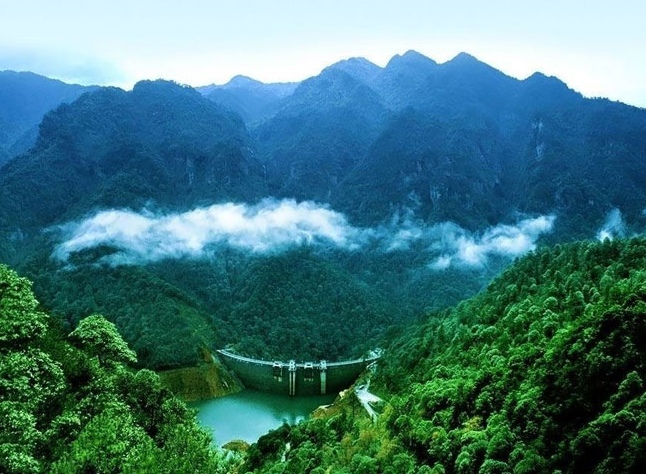

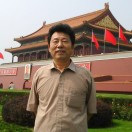
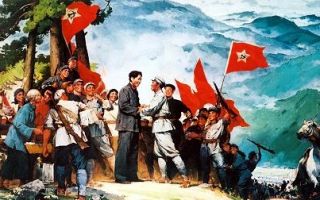
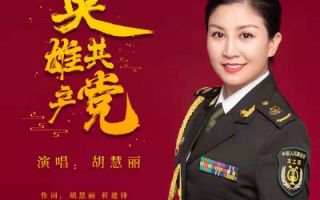
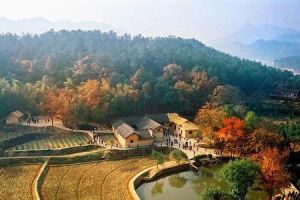
蒲文强